As many people mentioned here you will need to use AJAX if your using asp.net MVC to hit a controller POST function without having to leave your view.
A good use case for this is if you want to upload a file without refreshing the page and save that on the server.
All of the
return new EmptyResult();
Wont work, they will still redirect you.
Here is how you do it, in your view have the follow form as an example:
<form enctype="multipart/form-data" id="my-form">
<p>
The CSV you want to upload:
</p>
<input type="file" class="file-upload" name="FileUpload" />
</div>
<div>
<button type="submit" class="btn btn-default" name="Submit" value="Upload">Upload</button>
</div>
</form>
Then in the JavaScript side you need to add this to your view with within Script tags.
$("#my-form").on('submit', function (event) {
event.preventDefault();
// create form data
var formData = new FormData();
//grab the file that was provided by the user
var file = $('.file-upload')[0].files[0];
// Loop through each of the selected files.
formData.append('file', file);
if (file) {
// Perform the ajax post
$.ajax({
url: '/YourController/UploadCsv',
data: formData,
processData: false,
contentType: false,
type: 'POST',
success: function (data) {
alert(data);
}
});
}
});
Your controller might look something like this to process this type of file:
[HttpPost]
public void UploadCsv()
{
var listOfObjects = new List<ObjectModel>();
var FileUpload = Request.Files[0]; //Uploaded file
//check we have a file
if (FileUpload.ContentLength > 0)
{
//Workout our file path
string fileName = Path.GetFileName(FileUpload.FileName);
string path = Path.Combine(Server.MapPath("~/App_Data/"), fileName);
//Try and upload
try
{
//save the file
FileUpload.SaveAs(path);
var sr = new StreamReader(FileUpload.InputStream);
string csvData = sr.ReadToEnd();
foreach (string r in csvData.Split('\n').Skip(1))
{
var row = r;
if (!string.IsNullOrEmpty(row))
{
//do something with your data
var dataArray = row.Split(',');
}
}
}
catch (Exception ex)
{
//Catch errors
//log an error
}
}
else
{
//log an error
}
}

